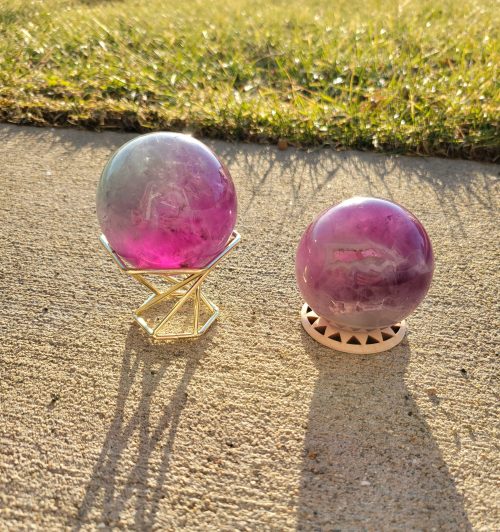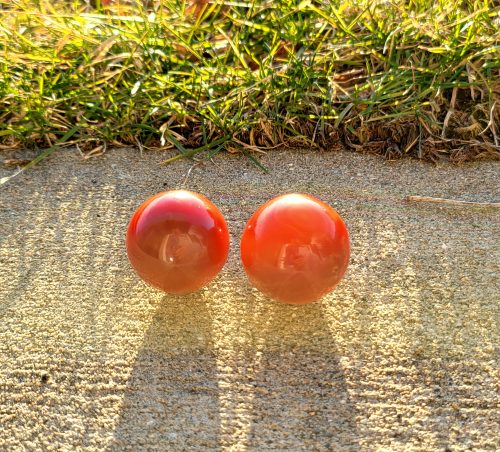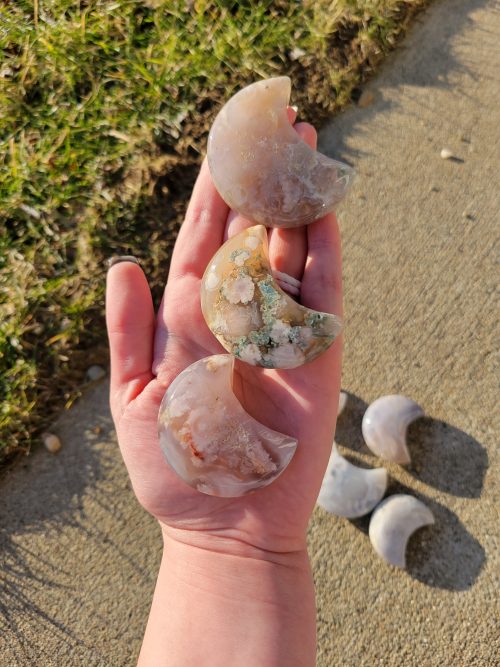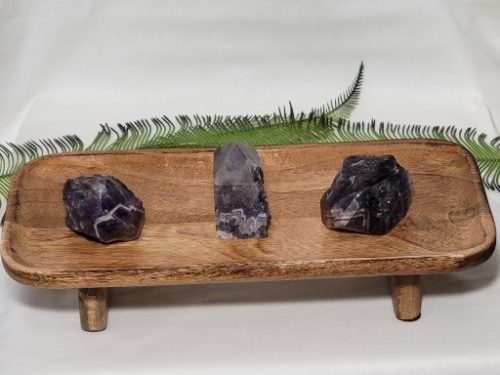-
60mm Fluorite is composed of fluorine and calcium and is formed in hydrothermal veins in the Earth's crust. This mineral can be found in all colors of the rainbow with different hues. The different colors in Fluorite are caused by impurities within the mineral. The deeper colors are found in well-formed crystals. Fluorite was originally discovered in Illinois in 1842 but is no longer mined in the US. It can be found in China, South Africa, Mongolia, France, and Russia. ***Due to natural variations in stones, the appearance will vary***
-
30mm Carnelian is a part of the Chalcedony family. It is formed when two silica minerals with different crystal structures grow together such as quartz and moganite. The firey orange and red colors come from iron oxides in the mineral. Carnelian can be found in Brazil, India, and Uruguay. ***Due to natural variations in stones, the appearance will vary***
-
4cm x 5cm x 2cm Flower agate gets its name from the flower-like formations within the crystal's body. These crystals are volcanic rocks that are mainly composed of chalcedony and quartz. These crystals can vary in color; from pink to a dark grey/purple. Recently discovered in Madagascar, these crystals are believed to go back to 2000 BC. ***Due to natural variations in stones, the appearance will vary***
-
7cm Wide Kiwi Jasper is a mix of amazonite, tourmaline, jasper, and quartz. It gets its name from the green tinge (amazonite) it has in addition to the green specks on it (tourmaline). This mineral is mainly found in New Zealand. ***Due to natural variations in stones, appearance will vary***
-
5cm - 6cm Wide Kiwi Jasper is a mix of amazonite, tourmaline, jasper, and quartz. It gets its name from the green tinge (amazonite) it has in addition to the green specks on it (tourmaline). This mineral is mainly found in New Zealand. ***Due to natural variations in stones, appearance will vary***
-
3cm - 4cm Smoky Quartz is found in the veins of igneous and metamorphic rocks. Well-formed smoky quartz is found in the cavities of metamorphic rocks. This mineral's color varies depending on where it is found. In areas where there are radioactive mineral deposits, Smoky Quartz is very dark due to the emissions. Brazil and Madagascar are the world's biggest suppliers of Smoky Quartz. ***Due to natural variations of stones, the appearance will vary***
-
3cm - 4cm Wide Septarian concretions are concretions containing cavities or cracks, called septaria. The septaria are the calcite (yellow) filled cracks at the center of the rock, indicating where the center of the concretions have shrunk, possibly during dehydration during its transformative journey over a long period of time. Septarian can be found mostly in the Gulf of Mexico and Madagascar. ***Due to natural variations in stones, appearance will vary***
-
5cm - 6cm Rhodonite is a silicate mineral usually found in metamorphic rocks that are known to have other manganese minerals in them. The manganese is how Rhodonite gets its color. These beautiful minerals can be found in Argentina, Australia, Brazil, Canada, and many other places. ***Due to natural variation in stones, appearance will vary***
-
5cm x 5cm x 6cm Dream amethyst (also known as Chevron Amethyst) is a natural mineral formed when amethyst and white quartz fuse together while cooling down off after a volcanic eruption. The amethyst that fuses to the white quartz creates the chevron-like shapes in the crystals. The main areas Dream Amethyst can be found is Brazil, Namibia, and Morocco. ***Due to natural variations in stones, the appearance will vary***
-
6cm - 7cm Wide Flower agate gets its name from the flower-like formations within the crystal's body. These crystals are volcanic rocks that are mainly composed of chalcedony and quartz. These crystals can vary in color; from pink to a dark grey/purple. Recently discovered in Madagascar, these crystals are believed to go back to 2000 BC. ***Due to natural variations in stones, the appearance will vary***
-
4cm - 5cm Carnelian is a part of the Chalcedony family. It is formed when two silica minerals with different crystal structures grow together such as quartz and moganite. The firey orange and red colors come from iron oxides in the mineral. Carnelian can be found in Brazil, India, and Uruguay. ***Due to natural variations in stones, the appearance will vary***











